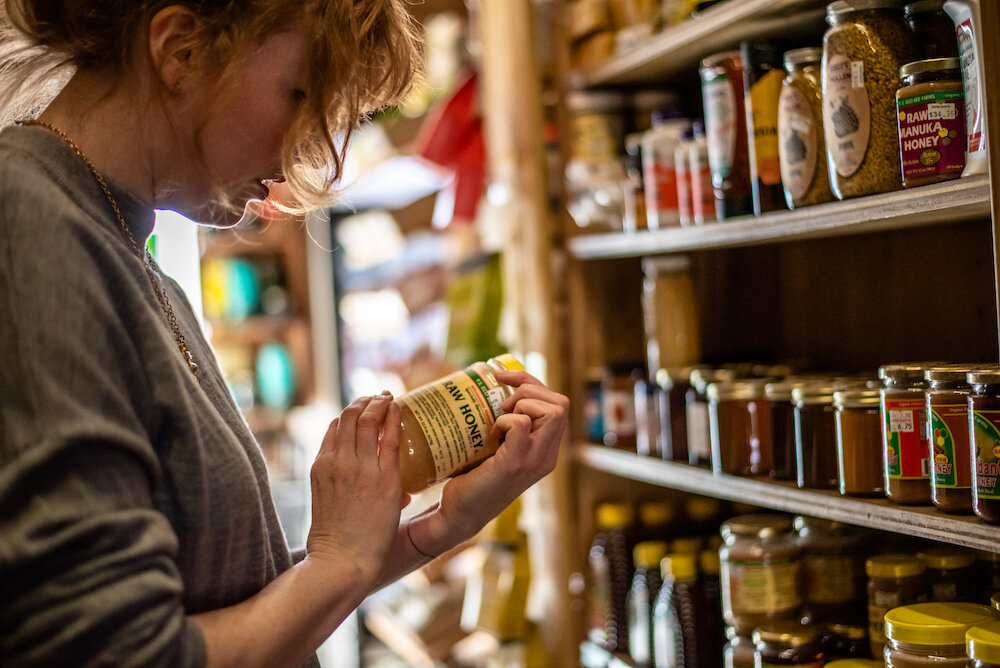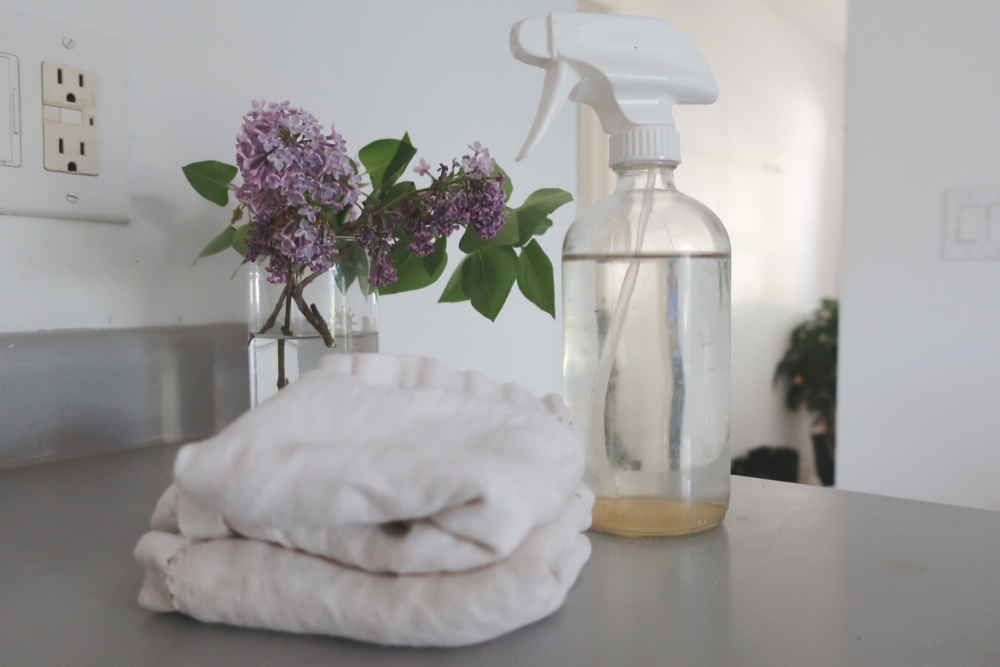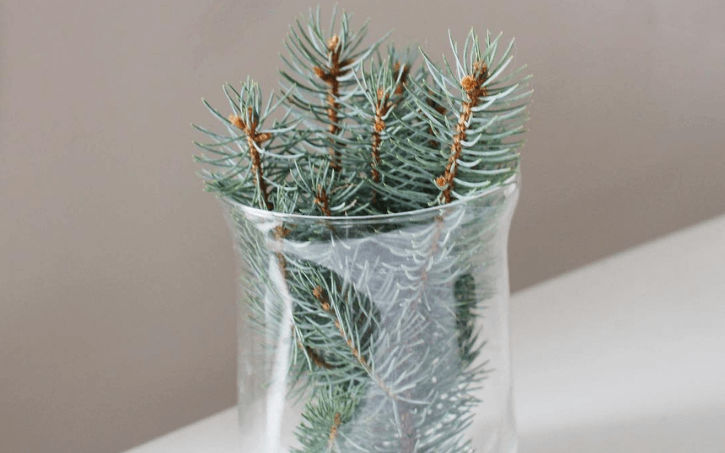The 2024 sustainable lifestyle challenge
Introducing the 2024 sustainable lifestyle challenge, a guide to lead you through the intricacies of a zero waste life without fear and uncertainty!


Starting a year of living a more sustainable lifestyle is overwhelming.
I remember when I first started exploring a sustainable lifestyle it felt almost impossible. There was just so much to do, it's easy to feel paralyzed and unable to start.
Luckily, you can use my years of suffering to your benefit! Introducing the 2024 sustainable lifestyle challenge, a guide to lead you through the intricacies of a zero waste life.
Happy exploring!

Month 1: A Low-Waste Kitchen
Do a trash audit. What's in your trash can? Don't know - you need to. Audit your waste and set goals to make less waste, fast. Here's how to do a trash audit.
Shop bulk. Zero waste shopping can help you avoid the most common single-use plastic items you send to the landfill. Learn how to reduce your waste at the grocery store. No local bulk stores? Buy bulk online!
Think beyond bulk. Zero waste is never zero. Find out about the waste behind bulk shops - and why it's OK if you still make waste. It's not you, it's the systems we live in.
No more food waste challenge. If food waste were a country, it would be the 3rd largest emiter of CO2 behind the US and China! It's a massive issue! Reduce your food waste with a zero waste meal plan.
If you feel overwhelmed at the very start of your zero waste journey, check out this post on starting a zero waste lifestyle, step-by-step.

Month 2: A Sustainable Bathroom
Assess Your Shower Space. What sort of shampoos and soaps are cluttering up your shower? What could you not re-buy? What could you buy less packaged? A list of zero waste hair care solutions to help.
Assess Your Sink Situation. Sinks, closets, and other cabinets - we've all got spaces that could be pared down. Whether it's skincare, electronics, or a self-care routine explosion, carefully consider what you do and don't value.
Bonus: Makeup Challenge. If you like wearing makeup, you know how wasteful and full-of-weirdness it can be. Audit your makeup collection and commit to buying more eco-friendly makeup when the time comes.
Water Usage Challenge. Water is a precious resource that's only becoming more scarce. We should treat it as such. Our water footprints are a huge, unseen source of waste in our lives. Here's how to reduce your water footprint.

Month 3: Green Cleaning
For all of these, plan to refer to this post about simple zero waste cleaning recipes. You probably already have all the ingredients you need to get started today!
Do a Cleaning Supplies Audit. What cleaning supplies do you have? Bring them all together and make a list of keep, DIY, or no re-buy. Keep are the products you love. DIY are swaps you can make for a more eco-friendly option. No re-buy means just that. Once it's gone, don't buy it again!
Make a Swap I: Under the Sink. To me, “under the sink” is all those typical cleaning products like disinfectants, window sprays, glass sprays, tile sprays, scrubs, etc… that companies have convinced us we need for each individual item in our house! Find one to replace and do a DIY cleaning swap in its place.
Make a Swap II: Everything Else. Dishes, laundry, and whatever other cleaning odds and ends remain. Easy swaps are laundry detergent and dishwashing powder/liquid!

Month 4: Bring Sustainability to Work
What’s it like at work? assessment. Ask yourself questions like "how do my coworkers feel about sustainability? How can I make my own workspace more green? If I want to suggest a change, who do I talk to? What's one simple swap I could make in my office?
Tackle your coworkers. (Not literally.) Help make your coworkers more aware and comfortable around zero waste and sustainability. Here's an in-depth post on how to make your office/work more sustainable.
Make a change challenge. Have your office conduct a full waste audit and set office-wide goals to create less waste. Find tons of plastic utensils? Get a set of real silverware for the kitchen. Use the same principles around an at-home trash audit to get it done.

Month 5: Sustainability IRL
Do a day-to-day assessment. On your next typical day (a day at the office if you work, a day of shuttling kids around if you stay at home, a day of classes if you’re a student, etc.) create an ongoing note in your phone about all the waste you create. Receipts, plastic packaging, single-use items, etc. From there, set some goals. Here are some zero waste resolutions to get you started!
Craft the perfect zero waste kit. A zero waste kit is just a simple set of items you bring with you when you leave the house to avoid single-use plastics. Easy, simple, effective. A sample zero waste kit to get you started.
Deal with the nay-sayers. When you become more vocal about zero waste and sustainability, you're sure to hear some push-back from climate sceptics or deniers. Here's how to talk with people who don't care about sustainability.

Month 6: Minimizing Mindfully
What are you spending? One of the most overlooked facts about zero waste is that you can do it very cheaply and it's not about buying new stuff all the time. Monitor your spending for a week and see if your spending is in line with your values. Zero waste on a budget is possible.
10 in 15 challenge. If you’re ready to let go of your things, but worry that minimizing is inherently anti-zero waste – it doesn’t have to be. The 10 in 15 challenge is the perfect way to start zero waste decluttering without mindlessly throwing things into your garbage bin!
I: bathroom and kitchen. Our bathrooms and kitchens clutter up quickly! Check out this post on zero waste bathrooms - and this one on 10 zero waste kitchen swaps!
II: bedroom and living room. The rest of our house isn't far behind in the clutter department. Find out some eco-friendly swaps for products you already use and mindfully bring them into your home.

Month 7: Your At-Home Garden
What’s your growing potential? Whether you have a sunny window or an entire yard, grow something. Consider a small herb container in the kitchen window or even tearing up your lawn!
Tools for laying out your garden. If you have the privilege of owning land, consider turning part of it into a community garden for greater food security!
An intro to low-waste gardening. A waste-free garden of any size is possible. This post guides you through all the considerations of low-waste gardening!

Month 8: De-Trashing Travel
Build your travel to-go kit. Like our daily zero waste kit, your travel to-go kit prepares you for avoiding single-use plastics while on-the-go. It's just pared down for easy transport and tailored to where you’re going and what you’re doing on your trip.
What’s the best way to travel? The unsatisfying answer is that it depends. While this data is outdated and I'm sure the efficacy of different transport has changed, it is a good baseline to understand how far and with whom we travel greatly affects our carbon emissions during travel.
Deal with carbon emissions. To cancel out the negative effects of carbon emission, individuals and businesses can purchase carbon offsets. An organization calculates the cost of your carbon emission and you pay the monetary equivalent. Find out more about carbon offsets here.

Month 9: All About Composting
All questions and concerns about composting can be found here!
Find your compost sweet spot. Here are the four general composting solutions I suggest to those just getting started: for small spces, a worm bin or bokashi. For larger spaces, the compost pile and tumbler are good options.
Food waste and compost challenge. Here's your challenge: reduce the amount of food you waste by 50%. Here are a few ways to reduce your food waste without too much trouble!
Find outside arrangements. Composting pickup services or municipal drop-off locations are often available. Do some research - your town may have an option for people who want to divert food waste from the landfill but can’t or don’t want to have compost at their home. Celia of Litterless has a helpful regional break-down of composting options that may provide some answers.

Month 10: An Ethical Wardrobe
Complete a closet assessment. Make a list of your clothes, divide them by how you feel about them/how often you wear them, and begin the process of assessing your closet. If you need anything new, consider shopping secondhand first.
Declutter mindfully. The biggest question anyone really has is: how many clothes should I have? The number of items in an ethical wardrobe, really, is up to you. Whatever number you have after you closet assessment, dedicate
The pare down challenge. I challenge you to wear the same thing for one whole week! Choose a simple uniform that suits you – a dress, jumpsuit like mine, shirt/jeans/blazer combo , whatever! – and wear it for a whole week straight. That's it! After the week, assess what worked and didn't work for you!

Month 11: Community Action
Who is your community? The first part of creating a zero waste community is deciding who your community actually is! It could be a sustainability committee at your workplace, church, or favorite hang-out spot. It could also be as informal as an gathering of friends or family every so often! Here's why community is so important in zero waste.
Start a zero waste group. Doing zero waste yourself is OK, but linking up with a whole group of excited folks is even better. Consider hosting a zero waste meetup in your area and seeing who shows up!
Host a zero waste event. Take your efforts to the next level with a workshop. Creating something themselves gives people pride of ownership. Not only will they be more likely to utilize the product itself, but they’ll be much more willing to talk about it to friends and family. Here are four zero waste workshop ideas.

Month 12: Zero Waste Holidays
The ‘no wasteful gifts, please’ talk. For those of you who may dread a (potential) zero waste holiday with your family, I’m here for you. Be a good role model, set and prioritize realistic goals, and get a little bit sneaky with how you introduce zero waste and sustainability to people! Here are five strategies for having a zero waste holiday with your family.
Wrap sustainably. Once you've given fewer, but more meaningful gifts, think on how to wrap your physical gifts. Avoid that unrecyclable shiny wrapping paper and go for reusable wrapping like bags and cloth wrappings. If you're looking, have some ideas for a more sustainable gift-giving experience.
Make zero waste resolutions. You've done so much, but the goal of living a more sustainable life is never over! Make some new zero waste resolutions you'll carry into the next year!
And that's it! A whole year of zero waste living! Let me know in the comments what you've tried, what you'd like to try, and anything you have a question about!


 vigna
vigna 





